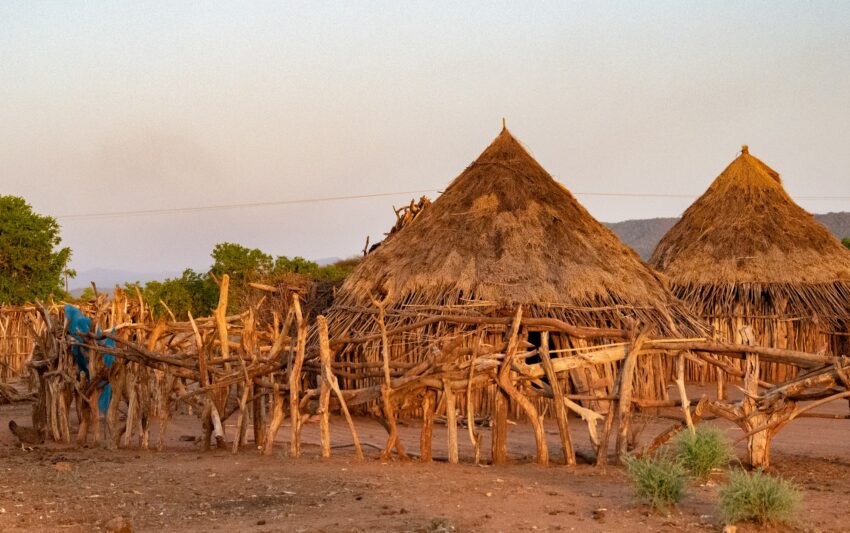
Bull-jumping – An Ancient Rite of Passage in Ethiopia
By Donnie Sexton
GoNOMAD Senior Writer
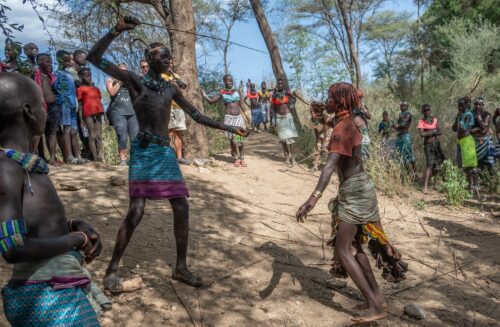
The young women from the Hamar tribe stood a few feet from me, dancing wildly with birch sticks in hand, begging the boys to whip them.
The young men obliged, taking the branches and whacking the arms and backs of these girls many times, often drawing blood.
I stood transfixed, wondering how such a cruel ritual ever came to be.
Ethiopia’s Omo Valley
It had been a handful of tribal portraits from photo websites that drew me to book a trip to Ethiopia’s Omo Valley. On the recommendation of a fellow photographer, I signed on with Nibret (Nibby) Adem, originally from the Omo Valley and owner of Hamerland Tours.
He laid out a plan to visit six tribes over six days with the hope we might encounter the impressive bull-jumping ceremony of the Hamar tribe, but he made no promises.
Getting to the Omo Valley
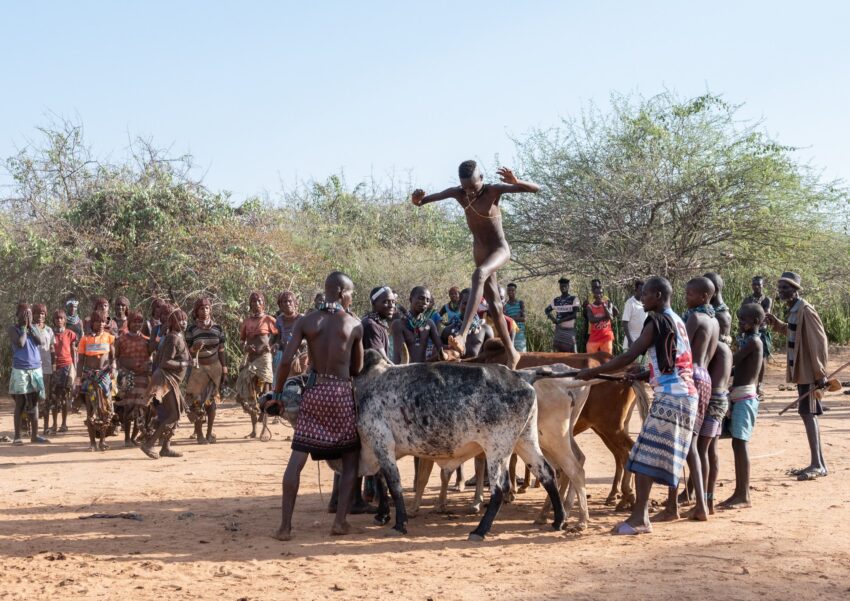
Getting to the Omo Valley isn’t a walk in the park. I flew into the capital of Ethiopia, Addis Ababa. A second flight on a small turboprop took me to Jinka, the nearest airport to the Valley, located in southern Ethiopia.
From there, it was a two-hour drive on a road of asphalt punctuated with rough gravel to the town of Turmi, my base for the six days. The Omo Valley, named after the Omo River, the largest Ethiopian river outside the Nile Basin, is home to 16 distinct ethnic groups.
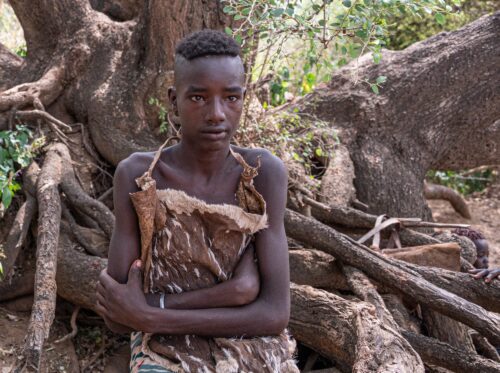
Every day we would travel the gravel roads to explore a new tribe, sometimes bouncing along for up to two hours to reach remote outposts.
I had the privilege of not only photographing the Mursi, Hamar, Dassanach, Karo, Nyangatom, and Arbore tribes, but spent time with them to gain insights into their lives through an interpreter.
Pastoral Tribes
Most of the tribes are pastoralists, breeding cattle, sheep, and goats. The livestock is a means of survival producing blood, milk, meat, and hides. Cattle are prized possessions, used as ‘bride wealth’ (dowry) given to the bride’s father by the groom’s family.
Some tribes live alongside the Omo River, giving them the means to grow crops such as sorghum, maize, beans, and pumpkins. Away from the river, the land is a dry, arid savanna and by my account, parched and dusty. These tribes have adapted and survived in this harsh environment for centuries.


Rituals That Warrant Sadness and Anger
These long drives afforded time for Nibby to share a wealth of knowledge about the land and its people.
Ethiopia is one of a handful of countries that has never been colonized. This means the tribes of the Omo Valley, untouched by outside influences, live a traditional lifestyle passed down through the centuries from their ancestors.

Each tribe has its distinctive rituals, celebrations, appearances, and traditions. Some of what Nibby detailed left me sad and angry.
With some tribes, female genital mutilation is still practiced, as is mingi, a belief that children with perceived abnormalities are considered impure and may be killed.
Unbelievably, a child’s top teeth erupting before the bottom teeth are viewed as a curse, as is a child born out of wedlock, which can result in mingi.
Bull-jumping, Unique to the Hamar Tribe
Bull-jumping, unique to the Hamar tribe, marks the passage for boys from adolescence to adulthood. When the father determines his eldest son is ready for bull-jumping, the son walks to neighboring settlements to announce the ceremony and distribute invitations.
Calendars, as we know them, don’t exist. So invitees receive a strip of cloth or a coil of rope with knots indicating the number of days leading to the ceremony.
The guests then cut a knot from the fabric or rope each day to keep track of the days left before the bull-jumping ceremony.
Wild and Whipped Women
As luck would have it, Nibby got wind of a bull-jumping ceremony we could witness. We arrived early to the festivities not wanting to miss any of the action. Before the bull-jumping, the Hamar women put on a noisy show, dancing in a frenzied circle, whooping, singing, and blowing on rudimentary horns.
Shells, beads, and bells sewn to the bottom of their goatskin wraps added another element of noise. Men in the crowd appeared inebriated and frequently taunted the women.
On the heels of the dancing came the bizarre whipping of the women. Only the Maza (boys who had completed the bull-jumping) can inflict the pain. The women seemed to relish the sting, as there were no tears or whimpering, just begging for a repeat whack with the stick.
Every time that whip cracked against the tender flesh, I winced. Nibby explained the women do this to show their affection and loyalty to the bull jumper and male members of their tribe. Scars become symbols of great pride, showing how one will suffer for their brothers and relatives. I said a silent prayer of thanks that I wasn’t born into this tribe.
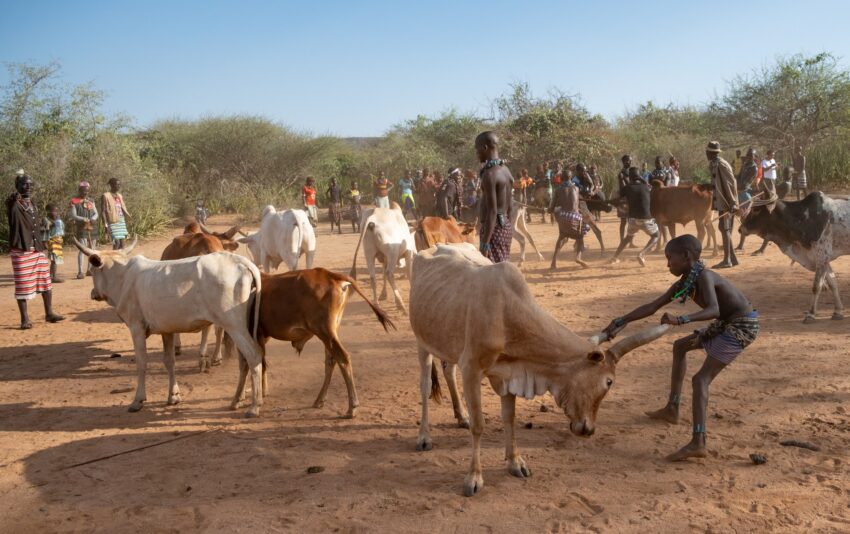
Jumping the Bulls
Prior to jumping, the boy’s head was partially shaved, his body rubbed with sand to wash away his sins, then smeared with dung to give him strength. Finally, after hours waiting in the hot sun, it was time for the big event.
The crowd moved into a dusty field where a herd of cattle and castrated bulls shuffled about. Men and boys of the tribe were lining them up by pulling on their tails and grabbing their horns. They succeeded in only getting five into formation, although eight to ten was the ideal number according to Nibby.
Naked Bull-Jumper
Now the gangly bull jumper, completely naked, leapt up onto the first bull and ran across the backs of the other bulls before jumping down, a feat that was repeated back and forth four times. With the show over, the crowd quickly dispersed, moving on to an all-night celebration with dancing, drinking, and who knows what else!
Tribal Life for the Maza
Having completed his rite of passage into manhood, the teenager now becomes a Maza and can marry the wife chosen for him by his parents, start a family, and build up his herd. Hamar men can marry up to four wives.
After the first arranged marriage, there can be a consensual marriage, a marriage through abduction, inheritance, or a replacement marriage. Wives are expected to take care of the husband, kids, and household. Add to that fetching water and firewood, often requiring exhausting walks.
The men tend to the crops and animals. Once the eldest son has completed the bull-jumping, his younger brothers are allowed to follow suit.
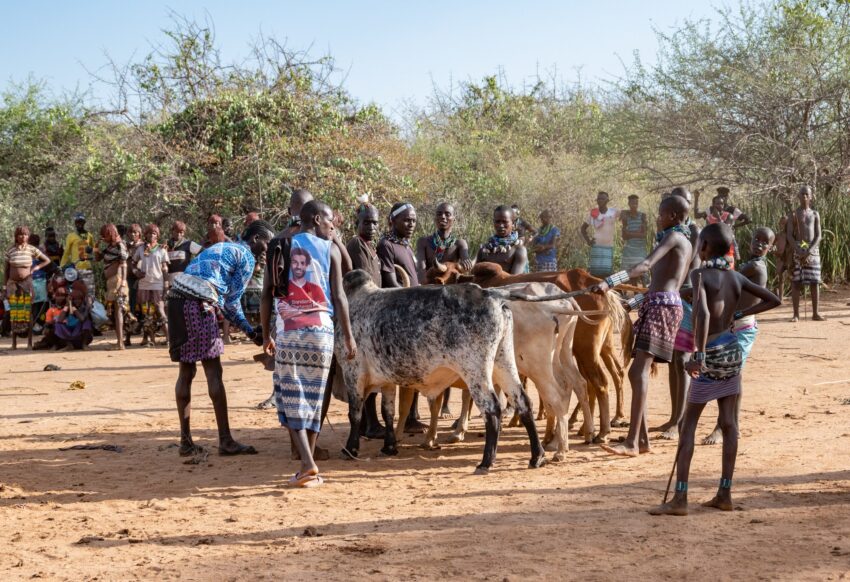
Humanity Raw and Unfiltered
My six days in the Omo Valley shed light on a slice of humanity unfiltered, and raw as it gets. I saw many variations of body beautification, from scaring to painting to piercings to lip plates. I saw many women covered with only a loin cloth and strings of beads around their necks.
I saw warriors toting around AK-47s used in tribal warfare. I saw young boys piece a cow with a sharp stick, milk the blood then drink it. I saw swarms of kids playing simple games, such as hide and seek and tag. What I didn’t see were any toys, not even a ball. A primitive life? Maybe, but only by my standards.
Life is Good
On the long plane ride back to the U.S. (17 hours via Ethiopian Airlines), I tried to wrap my head around all I had witnessed. I felt a profound sense of appreciation for the smallest creature comforts, a toothpick on my food tray, a clean glass of water, and toilet paper in the bathroom.
Even the flimsy airline pillow was a comfort, remembering how the tribes had nothing but animal skins laid on top of dirt for bedding. When I think back on this Ethiopian adventure, I’m reminded how blessed my life is.
- Butte, Montana: Home to the Richest Hill on Earth - April 6, 2024
- Spain’s Extremadura: History and Famous Pigs - December 20, 2023
- Storm Chasing Across Tornado Alley - October 25, 2023



